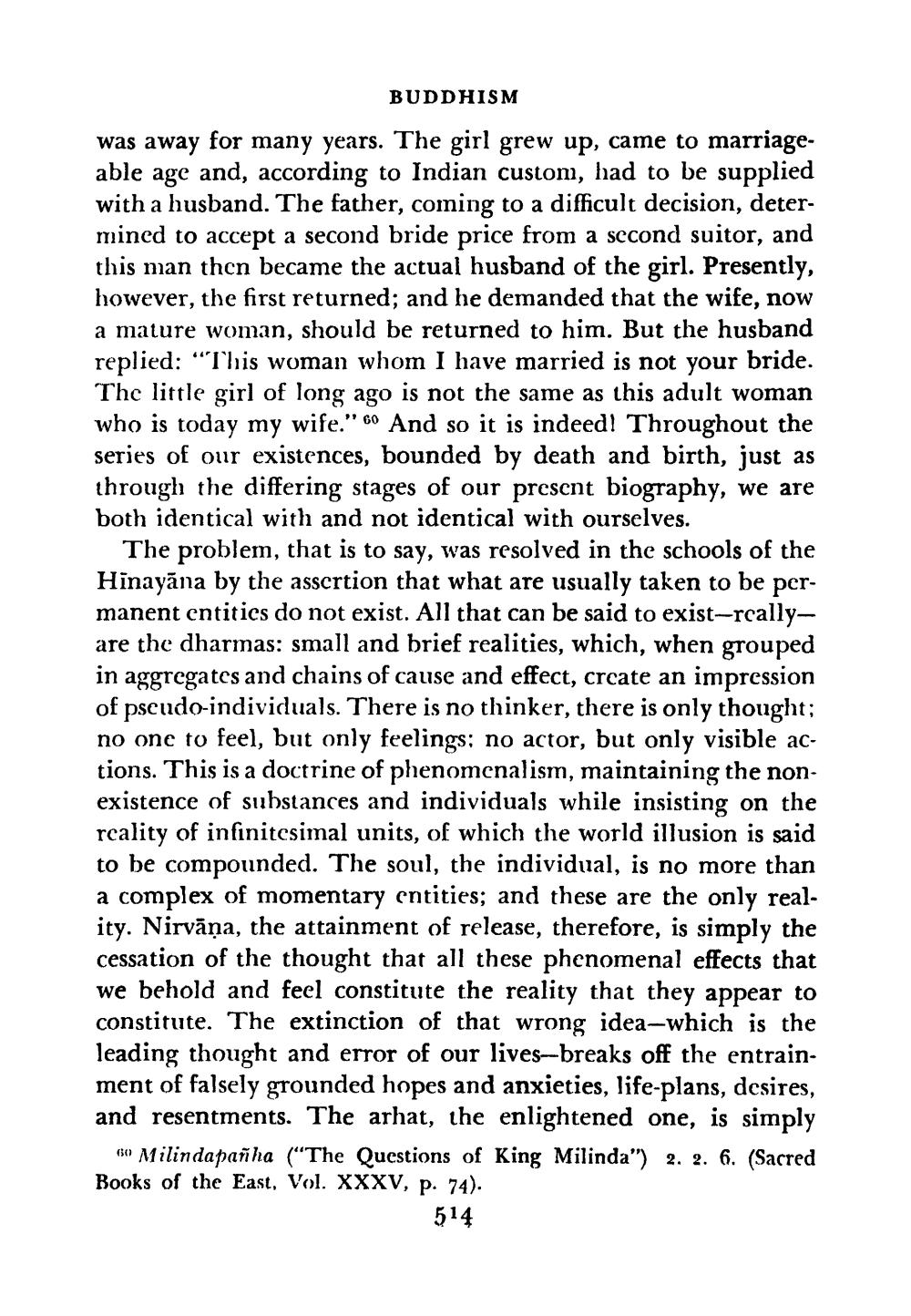________________
BUDDHISM
was away for many years. The girl grew up, came to marriageable age and, according to Indian custom, had to be supplied with a husband. The father, coming to a difficult decision, determined to accept a second bride price from a second suitor, and this man then became the actual husband of the girl. Presently, however, the first returned; and he demanded that the wife, now a mature woman, should be returned to him. But the husband replied: "This woman whom I have married is not your bride. The little girl of long ago is not the same as this adult woman who is today my wife." 60 And so it is indeed! Throughout the series of our existences, bounded by death and birth, just as through the differing stages of our present biography, we are both identical with and not identical with ourselves.
The problem, that is to say, was resolved in the schools of the Hinayāna by the assertion that what are usually taken to be permanent entities do not exist. All that can be said to exist-rcallyare the dharmas: small and brief realities, which, when grouped in aggregates and chains of cause and effect, crcate an impression of pseudo-individuals. There is no thinker, there is only thought; no one to feel, but only feelings; no actor, but only visible actions. This is a doctrine of phenomenalism, maintaining the nonexistence of substances and individuals while insisting on the reality of infinitesimal units, of which the world illusion is said to be compounded. The soul, the individual, is no more than a complex of momentary entities; and these are the only reality. Nirvāṇa, the attainment of release, therefore, is simply the cessation of the thought that all these phenomenal effects that we behold and feel constitute the reality that they appear to constitute. The extinction of that wrong idea-which is the leading thought and error of our lives--breaks off the entrainment of falsely grounded hopes and anxieties, life-plans, desires, and resentments. The arhat, the enlightened one, is simply
60 Milindapañha ("The Questions of King Milinda") 2. 2. 6. (Sacred Books of the East, Vol. XXXV, p. 74).
514




